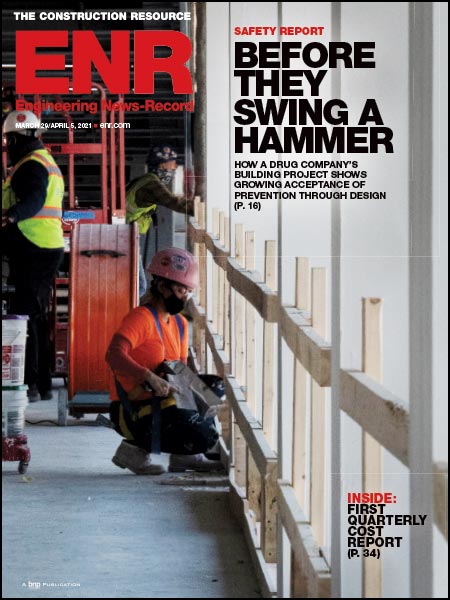
In the late 1960s, Texas general contractor H.B. Zachry Co. built a 500-room, 21-story Hilton hotel in downtown San Antonio for the city's HemisFair global exposition, and ended up creating a benchmark in modular construction.
To get the Hilton Palacio del Rio Hotel built by HemisFair's April 1968 start, the contractor—now called Zachry Construction Corp.—built the rooms eight miles off site and placed them in the hotel's steel skeleton. The completed room units included plumbing fixtures, lighting, beds, TVs and even ashtrays. A crane hoisted the modules into place—with stabilizing help from a skid-mounted helicopter rotor—in only 46 days. The entire hotel was built in 202 working days, opening five days early on April 1, 1968.
Today, prefabrication and modularization are faster, safer, more high-tech and often cheaper—and they are the future of the construction industry, say many contractors and industry analysts. But they also involve challenges, from doing early planning to streamlining the logistics associated with multiple trades working in an offsite prefab facility. Some are discouraged that the strategies aren't being embraced more quickly.
"I truly think that in the next 30 years, nothing will affect the industry as much as prefab," says Ethan Cowles, a Denver-based senior consultant with construction consulting firm FMI Corp. Cowles is also the co-author of an October 2013 report about prefab/modular construction. "This is where the industry is going. There's a lot of optimism we're going to be able to do this in the future and see a lot of benefit, but I'm a little disappointed with how slowly it's moving," he says.
According to the FMI report, 61% of construction industry respondents to a survey about prefab say they expect it to grow more than 5% a year in the next three years. Some 81% of mechanical/electrical contractors say they already own prefab facilities, and 33% are thinking about acquiring them.
But only 40% of contractors consider prefab/modular capabilities a key part of their company's strategic initiatives. Nonetheless, FMI expects prefab projects to increase because of pressures on construction companies to lower prices, increase productivity, stay competitive and deal with a dwindling skilled labor force.
"There's a bit of disarray within the industry" on the subject of prefab, Cowles says. "We know what's good for us, but nobody wants to go first."
Before prefab/modular can become the norm, it needs to be more uniformly cost effective and efficient, according to contractors. It already saves on some costs, including material defects and rework that occurs more often on the jobsite than in the controlled environment of prefab facilities. But there are other costs, such as materials—plastic, wood, Styrofoam—necessary to pack prefabbed components for transport to the construction site. Strategies need to be created around accountability—who's in charge of quality control, who's going to give orders to whom—as well as mechanisms for holding people accountable. More buy-in among the trades would be helpful.
"Things you need to think of with multi-trade prefabrication are how are all these components assembled, how are things shipped to the site, how are they erected," says Atul Khanzode, director of construction technologies at DPR Construction Inc., based in Redwood City, Calif. "Many times authorities that have jurisdiction to approve your structure need to be worked into the process too."
Because prefab/modular relies on a supply-chain strategy, and construction traditionally has not been a supply-chain industry, project managers require training in that area—from knowing how to ship materials to creating a skid rack. Some contractors are already studying supply-chain industries, particularly consumer products manufacturing, to learn how to make their processes leaner.
With multi-trade projects, project managers especially need to learn communication skills and how to effectively influence others. Managers must think of themselves as supply-chain managers and learn how to speak the "language" of another trade.





